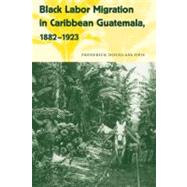
Frederick Douglass Opie is associate professor of history and director of the African Diaspora Program at Marist College. He is the author of Hog and Hominy: Soul Food from Africa to America.
| List of Illustrations | p. ix |
| Foreword | p. xi |
| Acknowledgments | p. xiii |
| Introduction | p. 1 |
| Historical Context: Race and Labor in Guatemala | p. 8 |
| Race, Resistance, and Revolution in the Late Nineteenth Century | p. 28 |
| Race Relations on the Early-Twentieth-Century Caribbean Frontier | p. 41 |
| Revolvers, Shotguns, Machetes, and Clubs: The Strikes of 1909-1919 | p. 52 |
| Labor Radicalism on the Caribbean Coast: Ladino Mobilization in Guatemala, 1920-1923 | p. 66 |
| We Depend on Others Too Much: Garveyism and Labor Radicalism in the Caribbean Basin | p. 87 |
| Epilogue | p. 97 |
| Notes | p. 103 |
| Bibliography | p. 125 |
| Index | p. 139 |
| Table of Contents provided by Ingram. All Rights Reserved. |
The New copy of this book will include any supplemental materials advertised. Please check the title of the book to determine if it should include any access cards, study guides, lab manuals, CDs, etc.
The Used, Rental and eBook copies of this book are not guaranteed to include any supplemental materials. Typically, only the book itself is included. This is true even if the title states it includes any access cards, study guides, lab manuals, CDs, etc.